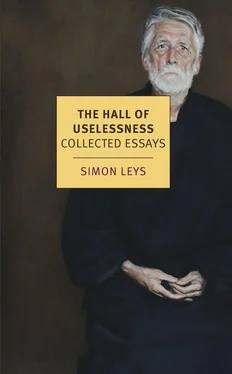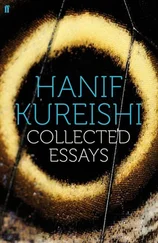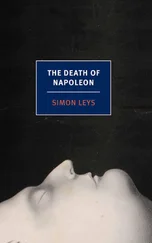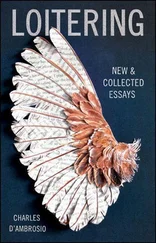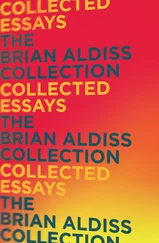I wonder if, to some extent, Chinese tradition is not such a “bowl of tea,” which under a most ancient, venerable and constant name can in fact contain all sorts of things, and ultimately anything but tea. Its permanence is first and foremost a permanence of names , covering the endlessly changing and fluid nature of its actual contents.
If this observation is correct, it could also have interesting implications in other areas, and you would naturally be free, for instance, to read in it a forecast regarding the eventual fate of Marxism-Leninism and Mao Zedong Thought. This essay, however, was only concerned with China’s past.
POSTSCRIPT
As this essay was going to the printers, I belatedly obtained a remarkable article by F.W. Mote, “A Millennium of Chinese Urban History: Form, Time and Space Concepts in Soochow.”[23] Reading some of the conclusions which Professor Mote drew fifteen years ago from a case study in Chinese urban history, one will realise that the ideas I ventured here are both less original and more sound than might have first appeared!
Having quoted a Western writer who observed at the beginning of the twentieth century that there were no ancient ruins in Suzhou, Mote comments:
His observation is largely correct. Is Soochow then a city of ancient monuments, or a city in which the awareness of antiquity comes from something else? In our tradition we tend to equate the antique presence with authentically ancient physical objects. China has no ruins comparable to the Roman Forum, or even to Angkor Wat, which is a thousand years younger. It has no ancient buildings kept continually in use such as Rome’s Pantheon and Istanbul’s Hagia Sophia. It does not have those, not because of incapacity to build with “hewn stone, as in Athens and Rome” as du Bose suggests. It does not have those because of differences in attitude — a different attitude toward the way of making the monumental achievement, and a different attitude toward the ways of achieving the enduring monument.
Mote then illustrates his point by sketching the history of Suzhou’s Great Pagoda — with a history going back to the third century AD, it was modified, destroyed and rebuilt many times during the ages, ending up as a twentieth-century construction:
This history is typical of China’s ancient monuments. No building with such a pedigree would count for much as an authentic antiquity even in the United States, much less in Rome. It certainly would not count for much among Ruskin’s Stones of Venice.
Mote concludes:
The point most emphatically is not that China was not obsessed with its past. It studied its past, and drew upon it, using it to design and to maintain its present as has no other civilization. But its ancient cities such as Soochow were “time free” as purely physical objects. They were repositories of the past in a very special way — they embodied or suggested associations whose value lay elsewhere. The past was a past of words not of stones. China kept the largest and longest-enduring of all mankind’s documentations of the past. It constantly scrutinized that past as recorded in words, and caused it to function in the life of its present. But it built no Acropolis, it preserved no Roman Forum, and not because it lacked the materials or the techniques. Its enduring structures of cut stone in antiquity were most characteristically burial vaults secreted underground, and, in the later imperial era, were bridges. Those vaults and bridges were called upon to serve a different level of utility; enduring public monuments to man’s achievements did not call forth those means.
Chinese civilization did not lodge its history in buildings . Even its most grandiose palace and city complexes stressed grand layout, the employment of space, and not buildings, which were added as a relatively impermanent superstructure. Chinese civilization seems not to have regarded its history as violated or abused when the historic monuments collapsed or burned, as long as those could be replaced or restored, and their functions regained. In short we can say that the real past of Soochow is a past of the mind , its imperishable elements are moments of human experience. The only truly enduring embodiments of the eternal human moments are the literary ones. [My emphasis throughout.]
This final point is then illustrated by the concrete example of Soochow’s Maple Bridge which became a poetical topic in literary history:
In all that psycho-historical material associated with the Maple Bridge, the bridge as an object is of little importance… No single poem refers to its physical presence. The bridge as idea was an item in the consciousness of all Chinese… yet, its reality to them was not the stones forming its span so much as the imperishable associations with it; those eternal moments realized in words. The physical object is entirely secondary. Anyone planning to achieve immortality in the minds of his fellow men might well give a lower priority to building some great stone monument than to cultivating his human capacities so that he might express himself imperishably in words, or at least be alluded to in some enduring line by a poet or essayist of immortal achievement.
1986
*
Chinese Calligraphy
THE DISCOVERY of a new major art should have more momentous implications for mankind than the exploration of an unknown continent or the sighting of a new planet.
Since the dawn of its civilisation, China has cultivated a particular branch of the visual arts that has no equivalent anywhere else in the world. On first encounter, Westerners misnamed it “calligraphy” by false analogy with a mere decorative craft that was more familiar to them. Although it was always one of the most sublime achievements of the Chinese genius, only today are art lovers outside China progressively beginning to prospect the riches of this artistic El Dorado that has finally opened up to them.
Like painting (which, being born of the same brush, is its younger brother rather than its twin), Chinese calligraphy addresses the eye and is an art of space; like music, it unfolds in time; like dance, it develops a dynamic sequence of movements, pulsating in rhythm. It is an art that radiates such physical presence and sensuous power that it virtually defies photographic reproduction — at times even, its execution can verge on an athletic performance; yet its abstract and erudite character also has special appeal for intellectuals and scholars who adopted it as their favourite pursuit. It is the most elite of all arts — it was practised by emperors, aesthetes, monks and poets — but it is also one of the most popular. Its tools — brush, ink and paper — can be simple and cheap and are within the reach of nearly anybody — schoolchildren, women, modest townsfolk, bohemian drunks, hermits. Its manifestations are ubiquitous and diverse — from the refined studio of the aristocratic connoisseur to the gaudy signs of the marketplace. In China, the written word lives and reigns everywhere — on the walls of palaces and temples, as well as on those of wine shops and teahouses, and at new-year time, its inspiring and sacred presence graces the doors of even the poorest farmhouses in the most remote hamlets.
The practice of the art of writing is not the exclusive preserve of specialists. The calligraphic brush can yield rewards that are as multiform as the human quest itself. To the unworldly, it affords a path of spiritual cultivation, and for the ambitious it is a prerequisite to climbing the ladder of a political career. Until recently, no Chinese statesman could truly command respect without being also master of the brush; social prestige as well as intellectual and artistic reputations could not be secured without a skilful handwriting. Thus, for centuries, literally millions of Chinese have devoted themselves to the exercise of calligraphy; in the practice of this art, they have sought self-expression or social promotion, self-oblivion or inner concentration; they practised calligraphy out of necessity or out of passion — as a solace, as a convention, as an escape, as an obsession, as a liberation; for many, it was a drug, an ascesis , a private madness, an austere discipline, a way of life; the best of them found in it the perfect paradigm of efficient activity , a method for achieving the harmonious integration of mind and body, the key to supreme enlightenment.
Читать дальше
